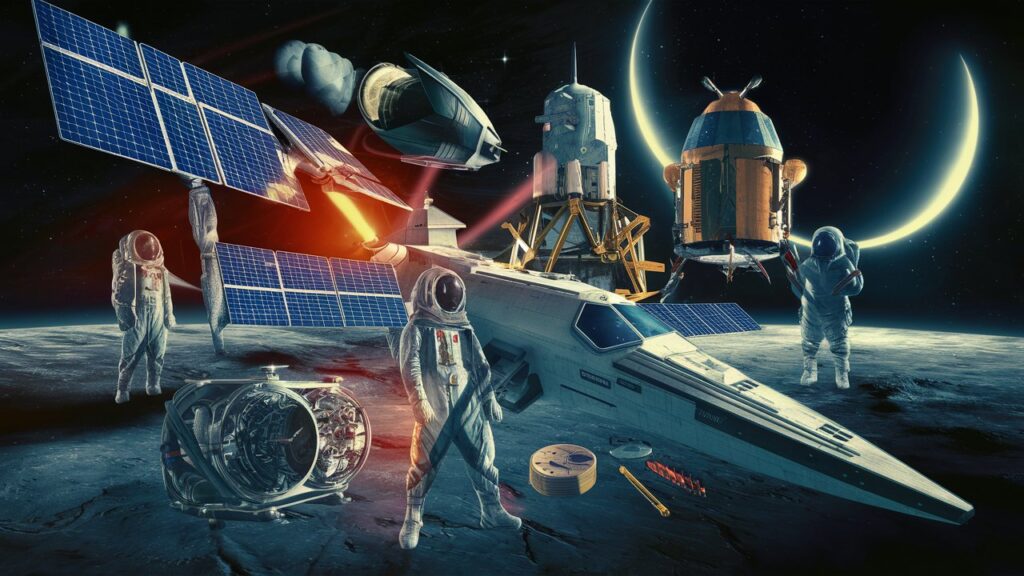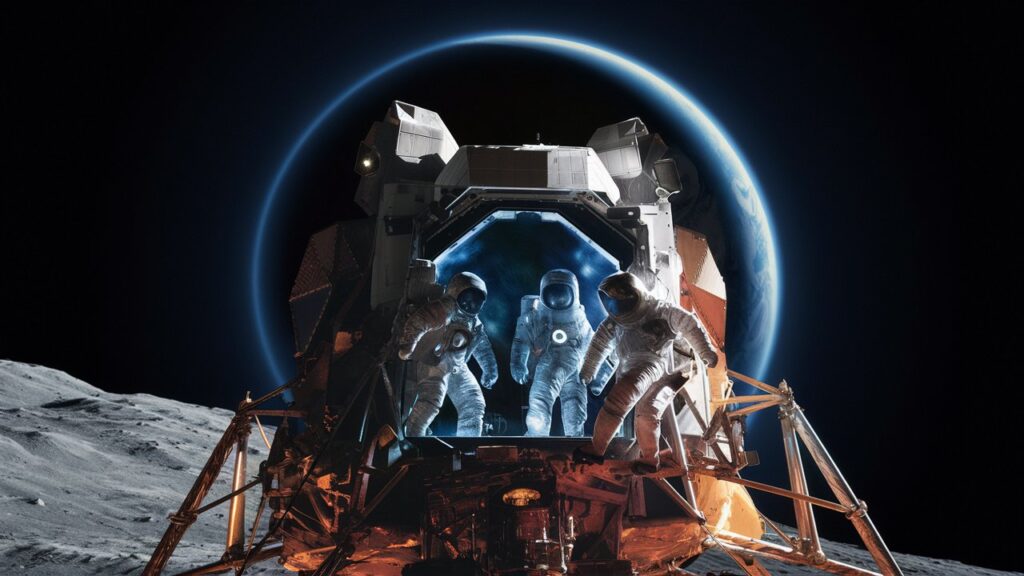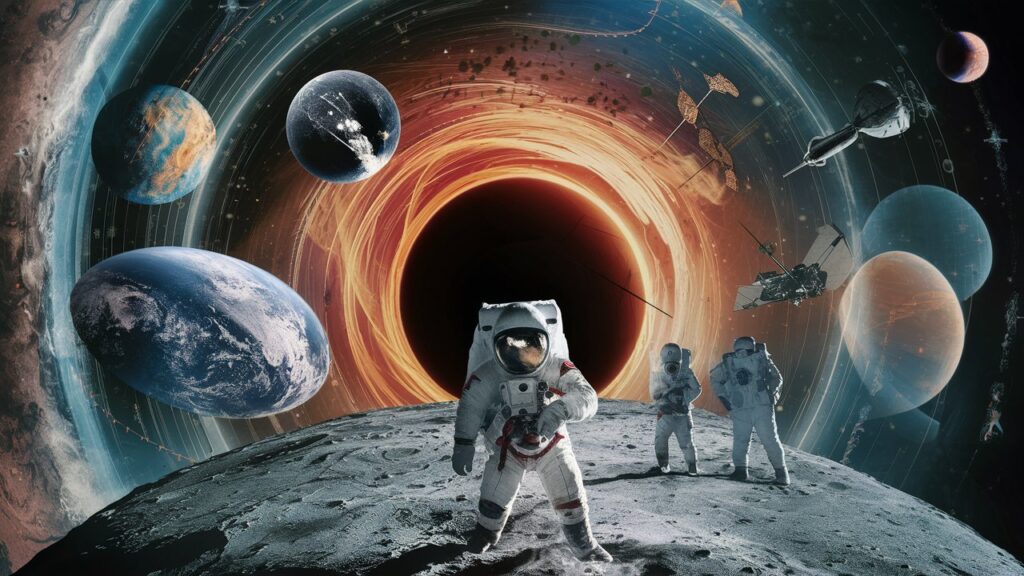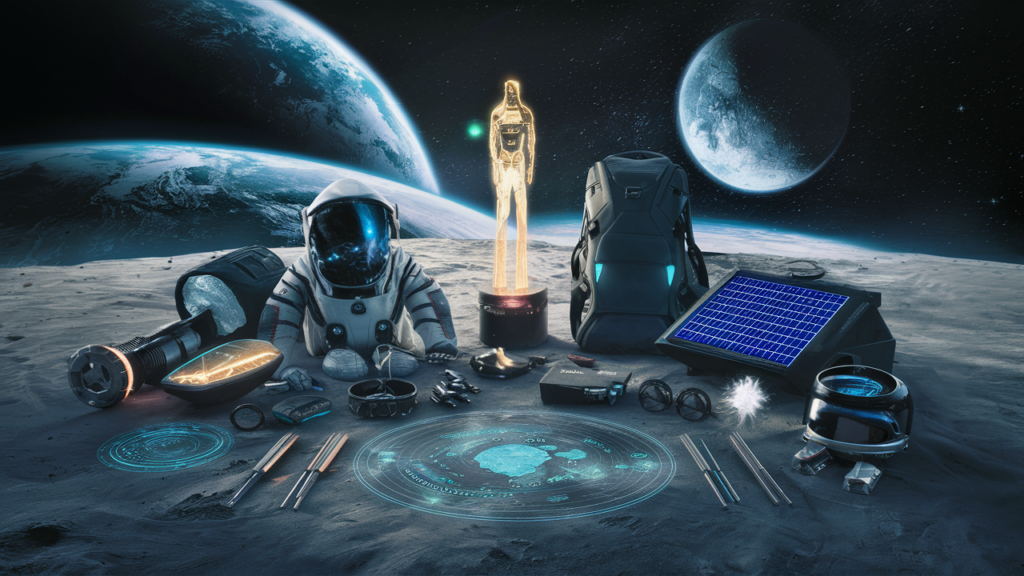Solar and Lunar Escape

Image Source: FreeImages
Table of Contents
Introduction to Solar Escape and Lunar Escape

As humans, we have always been fascinated by the celestial bodies that surround us. The sun, with its fiery brilliance, and the moon, with its serene glow, have captivated our imaginations for centuries. However, these celestial bodies, including the sun and moon, also exert a powerful force on us – gravity. In this article, I will delve into the secrets of solar escape and lunar escape, exploring the techniques and strategies for breaking free from the gravitational pull of these significant celestial bodies.
Understanding the Concept of Celestial Gravities

Gravity, a fundamental force of nature, attracts objects towards each other. In the case of celestial bodies, such as the sun and the moon, their immense mass creates a gravitational pull that keeps surrounding objects in orbit. Solar escape and lunar escape refer to the process of overcoming these gravitational forces and moving away from the respective celestial body, a challenge that requires understanding the dynamics between gravity, celestial bodies, and their orbits.
To understand the concept of celestial gravities, grasping the basics of orbital mechanics is crucial. Objects in orbit are constantly falling towards the celestial body they are orbiting, but their forward motion keeps them in a balanced orbit. Breaking free from this orbit requires a careful balance of velocity and direction to overcome the gravitational pull exerted by these celestial bodies.
The Challenges of Escaping Celestial Gravities

Escaping the gravitational pull of the sun or the moon is no easy feat. The sun’s gravity, for instance, is approximately 28 times stronger than Earth’s gravity, making it a formidable challenge, while the moon’s gravity, about 1/6th of Earth’s gravity, presents its own set of challenges. Overcoming these forces requires a tremendous amount of energy and precise calculations to counteract the gravitational pull.
Another challenge is the speed at which objects need to travel to escape the gravitational pull. Known as the escape velocity, this speed varies depending on the mass and size of the celestial body. For example, the escape velocity from Earth is 11.2 kilometers per second, while from the moon it’s only 2.38 kilometers per second. Achieving these velocities necessitates powerful propulsion systems and meticulous planning.

Additionally, there are other factors to consider, such as gravitational assists from other celestial bodies, trajectory calculations, and the impact of atmospheric drag. Overcoming these challenges demands a deep understanding of celestial mechanics and precise engineering to navigate the complexities of gravitational assists and trajectory planning.
Techniques and Strategies for Breaking Free from Celestial Gravities

Breaking free from the gravitational pull of the sun or the moon requires a combination of techniques and strategies. One effective approach is utilizing the gravitational slingshot effect, or gravity assist, which involves leveraging the gravitational pull of a nearby planet or moon to gain momentum and alter the trajectory of the spacecraft, significantly reducing the fuel needed for propulsion.
Another technique involves the use of powerful propulsion systems, such as chemical rockets or ion drives, to reach the necessary escape velocity. Chemical rockets provide the initial thrust required to break free from the gravitational pull, while ion drives offer a more fuel-efficient option for sustained thrust in long-duration missions.

In addition to these techniques, precise trajectory calculations and a solid grasp of orbital mechanics are crucial in successfully breaking free from celestial gravities. By meticulously planning the trajectory and timing of the escape, engineers can optimize the mission’s efficiency and minimize the energy requirements, ensuring a successful departure from the gravitational influence of celestial bodies.
Solar Escape: How to Break Free from the Gravitational Pull of the Sun
Escaping the sun’s gravitational pull is a monumental undertaking. The sun’s immense mass and gravity make it one of the most challenging celestial bodies to escape from. However, with the right techniques and strategies, solar escape from the sun’s gravity is indeed possible.

One approach to solar escape is to utilize the gravitational slingshot effect. By carefully planning the spacecraft’s trajectory and utilizing the gravitational pull of a nearby planet, engineers can gain the necessary momentum to break free from the sun’s gravity.
Another technique for solar escape is to use solar sails, which harness the pressure exerted by sunlight to propel the spacecraft. Made of lightweight materials that reflect sunlight, solar sails create a gentle push that gradually increases the spacecraft’s velocity, offering a fuel-free alternative for solar escape missions.
Lunar Escape: How to Break Free from the Gravitational Pull of the Moon
Breaking free from the moon’s gravitational pull presents its own set of challenges. However, with careful planning and the right techniques, lunar escape is within our reach.

One technique for lunar escape is to utilize the gravitational slingshot effect. By positioning the spacecraft in the correct trajectory and utilizing the gravity of a nearby celestial body, engineers can gain the necessary velocity to break free from the moon’s gravity.
Another approach for lunar escape is to use powerful propulsion systems, such as chemical rockets or ion drives, to achieve the required escape velocity. These systems provide the initial thrust needed to overcome the moon’s gravitational pull and propel the spacecraft away.
Real-Life Examples of Successful Solar and Lunar Escapes
Throughout history, there have been several notable examples of successful solar and lunar escapes. One such example is the Apollo 11 mission, which successfully landed astronauts on the moon and brought them back to Earth, utilizing powerful Saturn V rockets to break free from the moon’s gravity.

Another example is the Voyager 1 spacecraft, launched in 1977 to explore the outer reaches of our solar system. Voyager 1 utilized multiple gravitational assists from planets, known as the slingshot effect, to gain the necessary velocity to escape the sun’s gravity. Today, Voyager 1 continues its journey beyond our solar system, providing valuable data about the interstellar medium.
Tools and Equipment for Solar and Lunar Escapes
Successfully breaking free from solar and lunar gravities requires the use of specialized tools and equipment. These include powerful propulsion systems, such as chemical rockets or ion drives, which provide the necessary thrust to overcome the gravitational pull.

In addition to propulsion systems, precise navigation and guidance systems are essential for calculating trajectories and ensuring accurate positioning during escape maneuvers. These systems rely on advanced sensors, computer algorithms, and communication systems to guide the spacecraft safely away from the celestial body.
Safety Precautions and Considerations for Solar and Lunar Escapes
When embarking on solar escape or lunar escape missions, safety, a paramount concern, becomes even more critical. The extreme conditions and the challenges involved in overcoming celestial gravities require meticulous planning and consideration to ensure a successful and safe journey.

One key consideration is the health and well-being of the astronauts or crew members. Long-duration space missions introduce numerous physical and psychological challenges, such as radiation exposure, muscle atrophy, and psychological stress. Proper training, medical support, and monitoring are essential to safeguard the astronauts’ safety and well-being throughout these demanding missions.
Additionally, conducting thorough risk assessments and devising comprehensive contingency plans are indispensable in mitigating potential hazards and addressing unforeseen circumstances. These plans should encompass emergency procedures, communication protocols, and backup systems, all designed to enhance the safety and ensure the success of space missions.
Conclusion: Embracing the Freedom of Escaping Celestial Gravities
In conclusion, solar escape and lunar escape missions present intriguing challenges and opportunities for exploration beyond Earth. Overcoming the gravitational pull of the sun and the moon necessitates a blend of innovative techniques, strategies, and specialized equipment. By grasping the concept of celestial gravities and employing the appropriate tools, we can unveil the mysteries of solar and lunar escapes.

As we continue to advance the frontiers of space exploration, it is imperative to prioritize safety, thorough planning, and continuous research and development. In doing so, we can navigate the complexities of escaping celestial gravities with confidence and broaden our comprehension of the cosmos.
CTA: Join us in the quest for knowledge and exploration as we continue to unravel the mysteries of the cosmos. Together, let’s reach for the stars.
Author: CENTNETWORK
Courtesy: EPICMAZE
